Item Packing

What is the ideal way to pack fragile items for a journey ?
Packing fragile items for a journey can be a daunting task, but with the right approach, you can ensure that your precious belongings arrive at their destination safely. Here are some tips on how to pack fragile items ideally: 1. Use proper packing materials such as bubble wrap, packing paper, foam peanuts, and anti-static polyethylene bags. 2. Wrap each item individually to reduce the risk of damage during transit. 3. Use boxes of appropriate size to accommodate the item without too much extra space or pressure. 4. Label boxes appropriately with clear, legible writing to indicate that the box contains fragile items and which direction is up.
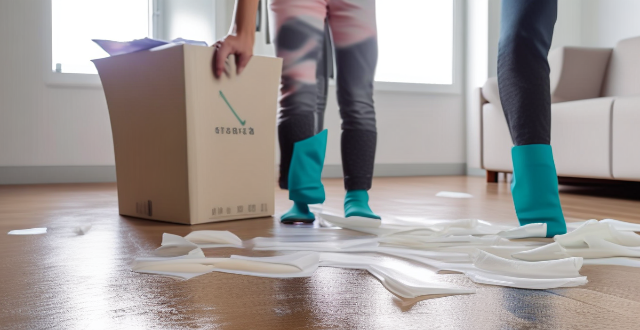
Are there any smart strategies for packing clothing to avoid wrinkles ?
Smart strategies for packing clothing to avoid wrinkles include rolling instead of folding, using tissue paper or dry cleaner's plastic to layer between items, packing heaviest items on bottom, utilizing every bit of space, hanging what you can, choosing wrinkle-resistant fabrics, and handling delicates with care. These tactics help minimize wrinkles in packed clothes, keeping your wardrobe looking crisp and fresh throughout your journey.
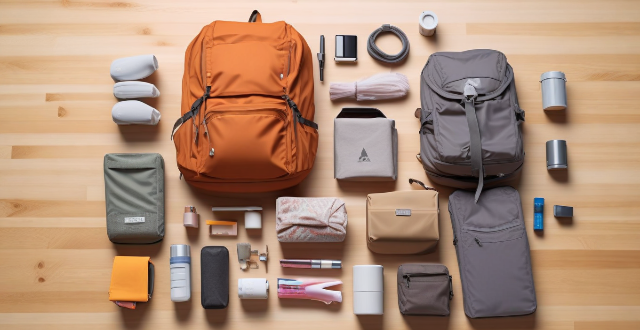
What are the must-have travel packing accessories for a comfortable trip ?
When planning for a trip, packing the right accessories is crucial to ensure comfort and convenience. Essential items include packing cubes, travel pillows, earplugs, portable chargers, water bottles, sunscreen, rain gear, versatile clothing, first aid kits, and compression bags. Each item serves a specific purpose, such as organization, neck support, noise reduction, device charging, hydration, sun protection, rain preparedness, space-saving in luggage, health care, and efficient use of suitcase space. Selecting these accessories based on individual trip needs can greatly enhance the traveling experience.
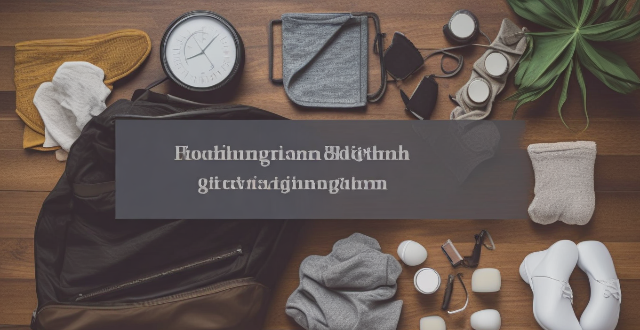
What are some tips for packing light for a backpacking trip ?
This text offers tips for packing light and efficiently for a backpacking trip. It suggests planning outfits, packing multipurpose items, choosing the right bag, rolling clothes, wearing bulkiest items, using packing cubes or compression sacks, limiting shoes, digitalizing reading material, and laying out everything before packing to ensure a more enjoyable and stress-free adventure.
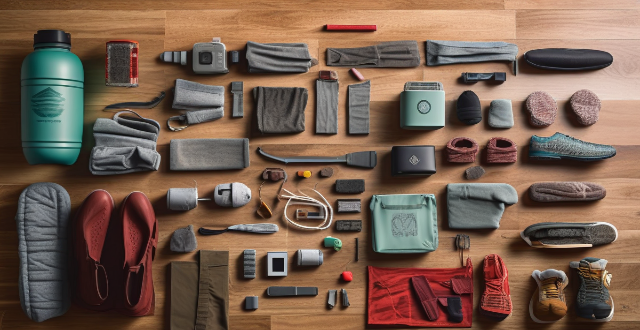
What are the best travel packing tips for a long trip ?
Packing for a long trip can be challenging, but with these tips, you'll be able to pack efficiently and strategically. Plan your outfits, pack lightweight clothing, choose versatile shoes, pack smart accessories, bring multipurpose toiletries, use packing cubes or compression sacks, and leave room for souvenirs. By following these tips, you'll have everything you need for your journey without overpacking or sacrificing style.
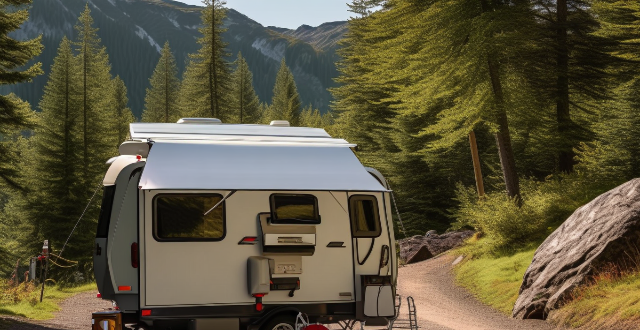
What are the best practices for packing light for a road trip adventure ?
Packing light for a road trip adventure is key to enjoying the journey without being weighed down by excess baggage. Best practices include planning outfits in advance, using packing cubes or compression sacks, rolling clothing instead of folding, sticking to a color scheme, opting for travel-size toiletries, wearing bulkiest items on the plane, and limiting accessories. By following these tips, you can ensure an enjoyable and stress-free road trip adventure.

What are some clever travel packing hacks for saving space ?
Traveling can be an exciting adventure, but packing your belongings can sometimes feel like a daunting task. However, with some clever packing hacks, you can maximize the space in your suitcase or backpack and avoid overpacking. Here are some tips to help you save space while packing: - Roll Your Clothes: Instead of folding your clothes, roll them up tightly. This not only saves space but also helps prevent wrinkles. You can even roll multiple items together, such as a shirt and its corresponding undergarments, to keep them organized. - Use Compression Bags or Packing Cubes: Compression bags allow you to squeeze out all the air from your clothing, significantly reducing their volume. Packing cubes, on the other hand, help you organize your items and make the most of the available space by filling odd-shaped gaps within your luggage. - Fill Your Shoes: Shoes tend to take up a lot of room, but they can also serve as storage containers. Stuff small items like socks, chargers, or even jewelry inside your shoes to save space elsewhere. Just make sure the items are clean and won't damage the shoes. - Layer Your Clothes: When packing outfits, layer them on top of each other rather than placing them side by side. This way, you can see everything at once and ensure that you have enough combinations without having to pack extra pieces. - Utilize Every Inch of Space: Think about the pockets in your luggage, the space inside your hats, and even the hollow tubes of toiletry bottles. These areas can hold small items like headphones, adapters, or medications that would otherwise take up valuable real estate in your bag. - Wear Your Bulkiest Items: If you have bulky items like sweaters, jackets, or boots, consider wearing them during travel rather than packing them. This not only saves space but also keeps you warm if you're traveling to a cold destination. - Choose Versatile Clothing: Pack items that can be worn in multiple ways or dressed up and down. For example, a scarf can double as a beach cover-up, and a dress can transition from day to night with different accessories. - Limit Your Toiletries: Instead of bringing full-size bottles, transfer your toiletries into smaller travel containers. You can also opt for solid shampoo bars or soap instead of liquid products to save space. - Pack According to Your Itinerary: Plan your outfits ahead of time and only pack what you know you will wear. Consider the activities you have planned and the weather at your destination to avoid overpacking unnecessary items.
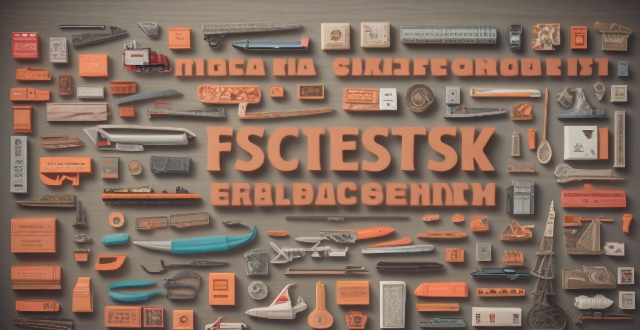
How can I safely transport large or fragile second-hand items ?
The article provides a detailed guide on how to safely transport large or fragile second-hand items. It starts by listing the necessary packing materials and then moves on to assessing the item for pre-existing damage. The article emphasizes the importance of disassembling larger items, proper packing techniques for both fragile and large items, and loading the vehicle carefully. It also includes tips for safe driving during transit and careful unloading. The article concludes with a recommendation to consult professional movers when unsure about handling such items.

How do I know if a luxury item is worth the price tag ?
When it comes to purchasing a luxury item, it is important to consider several factors before making a decision. Here are some tips on how to determine if a luxury item is worth the price tag: ## 1\. Research the brand and product - **Brand reputation**: Look into the brand's history, heritage, and reputation for quality craftsmanship. - **Product quality**: Examine the materials used, construction, and overall design of the item. - **Comparison shopping**: Compare similar items from other luxury brands to see if the price is justified. ## 2\. Consider your personal needs and preferences - **Functionality**: Will the item serve a practical purpose in your life, or is it purely for aesthetic purposes? - **Personal style**: Does the item align with your personal style and taste? - **Usage frequency**: Will you use the item frequently enough to justify the cost? ## 3\. Evaluate resale value - **Popularity**: Is the item popular among collectors or enthusiasts? - **Condition**: Is the item well-maintained and in good condition? - **Market demand**: Is there a high demand for this type of luxury item? ## 4\. Seek professional advice - **Expert opinions**: Consult with experts in the field, such as luxury goods appraisers or collectors. - **Online forums**: Join online communities dedicated to luxury goods and seek advice from fellow enthusiasts. - **Sales associates**: Ask sales associates at luxury stores for their recommendations and insights. ## 5\. Trust your instincts - **Emotional connection**: Do you feel a strong emotional connection to the item? - **Guilt-free spending**: Can you afford the purchase without feeling guilty or stressed about the cost? - **Long-term satisfaction**: Will owning this item bring you long-term satisfaction and happiness? In conclusion, determining whether a luxury item is worth the price tag requires careful consideration of various factors, including brand reputation, product quality, personal needs and preferences, resale value, professional advice, and trusting your instincts. By taking these factors into account, you can make an informed decision about whether a luxury item is truly worth its price tag.

What are some tips for packing a balanced lunch box ?
When packing a lunch box, it's essential to include a variety of foods from different food groups to ensure a balanced meal. Here are some tips for packing a nutritious and satisfying lunch box: 1. Start with a protein source like lean meats, seafood, or plant-based proteins. 2. Include whole grains such as whole wheat bread, brown rice, or quinoa. 3. Add fruits and vegetables like fresh or dried fruits and crunchy vegetable sticks. 4. Incorporate dairy or non-dairy alternatives like yogurt, cheese, or almond milk. 5. Don't forget healthy fats from nuts, seeds, avocado, or olives. 6. Include snacks and desserts like trail mix, granola bars, or dark chocolate. 7. Stay hydrated with water, herbal tea, or coconut water. 8. Pack smart by using reusable containers, ice packs, and divided lunch boxes. By following these tips, you can create a lunch box that is not only delicious but also provides the necessary nutrients to keep you energized throughout the day.

How can I determine the value of a second-hand item before purchasing it ?
When considering purchasing a second-hand item, itWhen considering purchasing a second-hand item, it its value to ensure you' it's important to determine its value to ensure you're getting a fair deal. Here are some steps to help you assess the value of a pre-owned item: 1. Research the market price by checking online marketplaces, consulting auction houses, and reading reviews and forums. 2. Evaluate the condition of the item by inspecting for damage, considering age and obsolescence, and testing functionality. 3. Negotiate with the seller by making an offer based on your research and evaluation, being prepared to walk away if necessary, and asking for more information if needed.
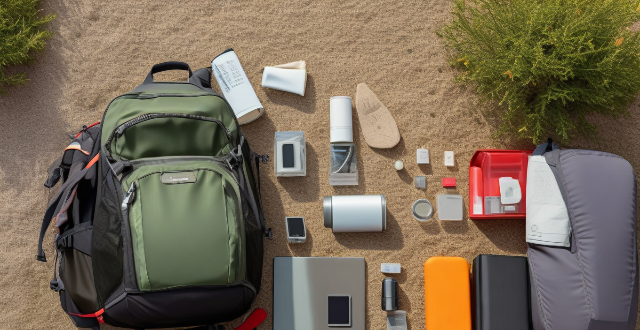
How can I avoid overpacking when traveling by air ?
Overpacking is a common problem when traveling by air, but it can be avoided with careful planning and organization. To avoid overpacking, make a packing list, choose versatile clothing, pack layers, roll your clothes instead of folding them, use compression bags or packing cubes, bring only necessary toiletries, wear your bulkiest items on the plane, check the weather forecast before packing, and be realistic about what you'll actually wear. By following these tips, you can enjoy a stress-free trip without having to worry about lugging around too much stuff.

How do I pack efficiently for a weekend getaway ?
Efficient packing for a weekend getaway can be achieved by creating a list, choosing versatile clothing, rolling clothes instead of folding them, using packing cubes or compression sacks, minimizing toiletries and electronics, packing lightweight shoes, utilizing all available space, and considering carry-on luggage only. These strategies help maximize suitcase space while ensuring travelers have everything they need for a fun and relaxing trip.

What should I pack for a tropical island vacation ?
When packing for a tropical island vacation, it's important to bring essentials such as sunscreen, insect repellent, swimsuits, and comfortable clothing. You may also want to consider bringing optional items like evening attire, reading material, and snorkeling gear. Check the weather forecast before your trip and adjust your packing list accordingly. Don't forget your sense of adventure and relaxation!

How do I pack my luggage to maximize organization and accessibility ?
Packing your luggage efficiently is key for a stress-free travel experience. Here are some tips on how to maximize organization and accessibility when packing your bags: 1. Choose the right luggage based on your trip type. 2. Use packing aids like cubes, compression sacks, and shoe bags to keep items tidy. 3. Roll clothes instead of folding them to save space and reduce wrinkles. 4. Fill dead space with small items like socks or electronic accessories. 5. Keep essentials in a separate bag for easy access during transit. 6. Follow the 'One Week Rule' to prevent overpacking. 7. Organize outfits together for quick grabbing. 8. Place heavy items at the bottom for balance. 9. Store liquids in a waterproof pouch. 10. Do a final check before leaving to ensure nothing is forgotten.
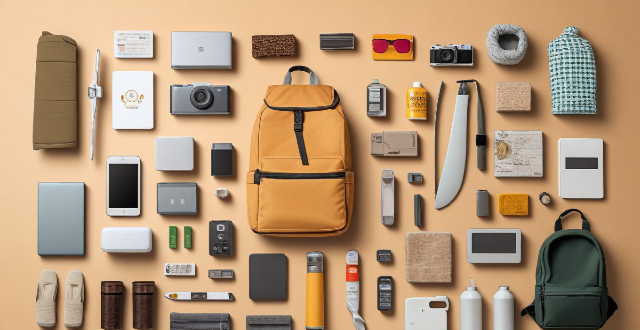
What should I pack for a week-long cruise trip ?
This guide provides a comprehensive list of essentials to bring on a week-long cruise trip, including personal care items, clothing and accessories, electronics and entertainment, miscellaneous items, and tips for efficient packing. It suggests packing travel-sized toiletries, necessary medications, comfortable casual wear, dressy attire for formal nights, swimwear, cover-ups, evening wear, suitable footwear, a camera or smartphone for capturing memories, chargers for electronic devices, books or an e-reader for relaxation, useful travel apps, sun protection items like sunglasses and hats, luggage locks for security, a daypack for shore excursions, a water bottle to stay hydrated, and important documents such as passports and IDs. The guide also includes tips for efficient packing like rolling clothes instead of folding them, using packing cubes or compression bags to keep items organized and separate, limiting shoes to versatile footwear that can be worn with multiple outfits, checking the weather forecast and packing accordingly, and considering laundry options either onboard or by washing items in the sink to reuse.

What are the best strategies for packing for a quick weekend city escape ?
When planning a quick weekend city escape, it's important to pack efficiently and strategically. Here are some tips on how to do just that: 1. Plan Your Outfits in Advance: Consider the weather, activities, and events you have planned during your trip. Try to choose versatile pieces that can be mixed and matched to create different looks. Example outfit combinations include jeans, white t-shirt, leather jacket, comfortable shoes; dress, cardigan, flats, statement necklace; and leggings, tunic top, boots, scarf. By planning your outfits in advance, you'll be able to pack only what you need without having to worry about running out of clothes or bringing too much. 2. Stick to a Color Palette: Choose a few colors that work well together and stick to them throughout your wardrobe. This will allow you to mix and match pieces more easily and reduce the number of items you need to bring. Example color palette includes neutrals (black, white, gray) and pops of color (red, blue, green). By sticking to a color palette, you'll be able to pack less while still creating stylish outfits for your weekend getaway. 3. Pack Lightweight Layers: Bring layers so you can easily adjust your outfit as needed without having to carry around bulky coats or sweaters. Example layers include lightweight cardigan or denim jacket; scarf or pashmina; thin turtleneck or long-sleeved tee. By packing lightweight layers, you'll be prepared for any weather while still keeping your luggage light and manageable. 4. Don't Forget the Essentials: Make sure to include items such as underwear, socks, toiletries, medications, and any necessary travel documents. These items may take up space but are essential for a comfortable and stress-free trip. Example essentials include underwear and socks (enough for each day plus one extra); toiletries (toothbrush, toothpaste, shampoo, conditioner, body wash); medications (prescriptions and over-the-counter remedies); travel documents (passport, ID, boarding pass). By including these essentials in your packing list, you'll be prepared for any situation that may arise during your weekend getaway.
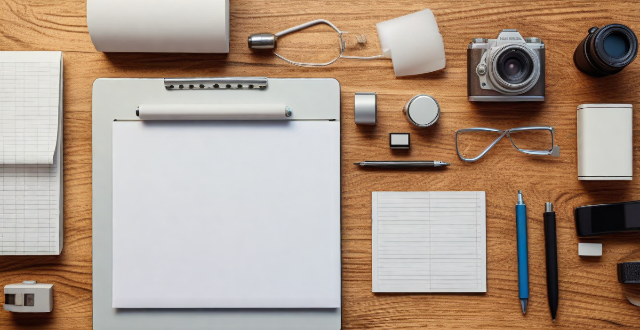
What are the best ways to organize my travel documents and important papers ?
Organize travel documents and important papers by creating a dedicated folder, using clear plastic sleeves for protection, keeping copies of essential documents, storing digital copies securely, maintaining a checklist, safeguarding documents in a secure wallet or pouch, staying organized while traveling with a day planner and expense tracker, and packing luggage neatly with packing cubes or compression sacks.

How can I verify the authenticity of a second-hand luxury item ?
This guide provides a comprehensive approach to verifying the authenticity of second-hand luxury items, emphasizing research on the seller's reputation, physical inspection, checking for authenticity marks, requesting proof of authenticity, and utilizing online verification tools. It also suggests additional tips such as understanding common fake indicators and consulting with experts for high-value purchases.

How can I effectively describe my second-hand items to attract buyers ?
When selling second-hand items, it's important to provide a clear and compelling description that captures potential buyers' attention. Here are some tips on how to effectively describe your items: 1. Keep the title short and sweet, using keywords related to the item and mentioning the brand and model if applicable. 2. Provide a brief overview of the item's condition and features, and mention any standout qualities or unique aspects. 3. Clearly state the condition of the item, using descriptive words like "like new," "gently used," or "well-loved." If there are any flaws or damages, mention them explicitly. 4. Highlight the main features and benefits of the item, using bullet points for easy reading and emphasizing any additional accessories or bonus items included. 5. Include multiple high-quality photos showing different angles and details, making sure they are well-lit and focused. Consider adding a photo of the item in use or with a size reference. 6. Set a fair price by researching similar items to determine a competitive price point, and consider offering a negotiation range or stating "firm" if you're not willing to budge. 7. Mention where you are located and whether local pickup is available, and if you offer shipping, specify the cost and estimated delivery time. 8. Provide a way for interested buyers to contact you, such as an email address or phone number, and consider adding a link to your profile or website for more information about other items you may have listed. By following these guidelines, you can create an effective description that will help attract potential buyers and increase your chances of successfully selling your second-hand items.

What are some tips for successfully haggling over the price of a second-hand item ?
Successfully haggling over the price of a second-hand item requires research, politeness, starting low but reasonable, highlighting flaws, offering cash payment, being willing to walk away, using silence to your advantage, and considering bundle deals.

How do I ensure safe transactions when buying or selling second-hand goods online ?
When engaging in online transactions for second-hand goods, it is crucial to take precautions to ensure the safety and security of both parties involved. Here are some tips on how to do so: Research the Seller/Buyer: Check reviews and ratings, verify identity, and be cautious about sharing personal information. Use Secure Payment Methods: Avoid cash transactions, protect financial information, and opt for secure payment methods such as PayPal or credit cards. Meet in Public Places: Arrange for public meetings and bring a friend along for extra security. Inspect the Item Before Purchasing: Thoroughly inspect the item, ask questions, and ensure it matches the description provided by the seller. Keep Records of the Transaction: Save conversation history and request receipts or invoices to document the transaction.

How can I make money by selling my used goods ?
Selling used goods is a great way to declutter your home and make some extra cash. Here are the steps you can follow to successfully sell your used items: 1. Determine what to sell by going through your belongings and deciding which ones you no longer need or use. You can sell anything from clothes and electronics to furniture and books. 2. Research the market value of your items by checking online marketplaces like eBay, Craigslist, or Facebook Marketplace to see how much similar items are selling for. This will help you price your items competitively. 3. Clean and repair your items before listing them for sale. Make sure they are in good condition and free of any damages or flaws that could affect their value. 4. Take high-quality photos of your items using natural lighting and a neutral background. Include multiple angles and close-ups of any unique features or details. 5. Write a compelling description that is honest about the item's condition and provides as much detail as possible, including brand, size, color, and any relevant history or stories associated with the item. 6. Choose a selling platform that best suits your needs and target audience, such as eBay, Craigslist, or Facebook Marketplace. 7. Price your items appropriately by considering their condition, age, and demand. Be open to negotiation and be willing to adjust your price if necessary. 8. Promote your listings on social media platforms like Facebook, Twitter, and Instagram to reach a wider audience. Join local buy-and-sell groups on these platforms to connect with potential buyers in your area. 9. Be responsive to buyers when they express interest in your item. Answer any questions they may have and provide additional information if needed. Building trust with potential buyers will increase the likelihood of completing a successful transaction. 10. Arrange for pickup or delivery (if applicable) with the buyer. Make sure to communicate clearly about timing and location details to ensure a smooth transaction process.

How do I find cheap flights without sacrificing comfort ?
Finding cheap flights without sacrificing comfort is a challenge, but it's not impossible. Here are some tips to help you find the best deals on comfortable flights: Being flexible with your travel dates can make a significant difference in the price of your flight. Try to avoid peak travel times like holidays and weekends, as these tend to be the most expensive times to fly. Instead, aim to travel during off-peak times, such as midweek or early morning/late evening flights. Booking early can often get you the best deals, as airlines tend to increase prices closer to the departure date. However, if you're willing to take a risk, booking last minute can also yield some great savings. Just be prepared to compromise on your preferred flight time and seating arrangements. Flight aggregator websites like Skyscanner and Kayak allow you to compare prices across multiple airlines and find the cheapest options. These sites often have filters that allow you to prioritize factors like layover time, cabin class, and airline ratings, so you can find flights that meet your comfort requirements. Many airlines offer newsletters and loyalty programs that provide exclusive discounts and deals to subscribers. By signing up for these, you can stay informed about upcoming sales and promotions that may not be advertised elsewhere. If you live near multiple airports, consider flying out of an alternative airport instead of the main one. These smaller airports often have cheaper flights due to lower demand and fewer flight options. Just be sure to factor in the cost of transportation to and from the airport when comparing prices. Hidden city ticketing involves booking a flight with a layover at your desired destination instead of the final destination listed on the ticket. This can sometimes result in significant savings, but it's important to note that it's against most airline policies and can result in complications if discovered. If you're willing to pay a bit more for extra legroom and comfort, consider choosing economy plus seats. These seats are typically located near the front of the economy section and offer more space than standard economy seats. They're often available for a reasonable fee, especially if booked in advance. Packing light can save you money on baggage fees and make your trip more comfortable overall. Most airlines allow passengers to bring one carry-on bag and one personal item for free, so take advantage of this by packing only the essentials and avoiding overweight baggage charges.

What are the best containers to pack a lunch box ?
The text discusses the importance of choosing the right containers for packing a lunch box, highlighting durability, leak-proofness, ease of cleaning, and safety for food storage as key considerations. It then presents five types of containers: glass, stainless steel, plastic with lids, bento boxes, and silicone bags, detailing their pros and cons in terms of non-toxicity, weight, microwave and dishwasher safety, versatility, and durability. The conclusion suggests that the best container depends on individual needs and preferences, advising consideration of factors like durability, safety, and suitability for intended use when making a decision.
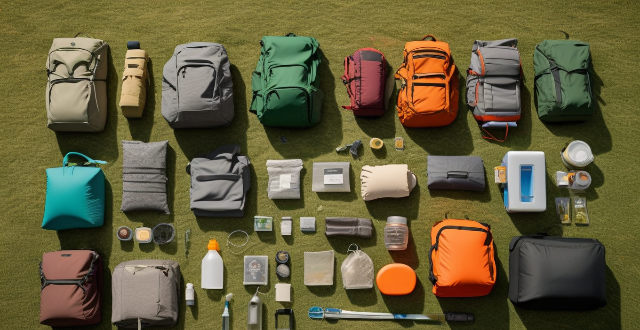
What should I pack for a nature and wildlife adventure ?
This packing list outlines essential and optional items for a nature and wildlife adventure. Essential items include appropriate clothing, equipment such as a backpack and tent, food and water supplies, safety and first aid provisions, and miscellaneous items like insect repellent and sunscreen. Optional items may include entertainment, personal items, and extra gear such as trekking poles and dry bags. It is important to pack according to the specific activities planned and the climate of the destination, and to check the weather forecast before departure to adjust the packing list accordingly.

What should I pack for a cultural exploration journey ?
When embarking on a cultural exploration journey, itWhen embarking on a cultural exploration journey, it that will enhance your experience and it is important to pack items that will enhance your experience and ensure your comfort throughout the trip. Essential items include comfortable walking shoes, lightweight clothing, culturally appropriate attire, camera, portable charger, travel adapter, sunscreen, insect repellent, basic toiletries, reusable water bottle, daypack, and travel journal. Research the specific needs and customs of the culture you will be visiting to tailor your packing list accordingly.
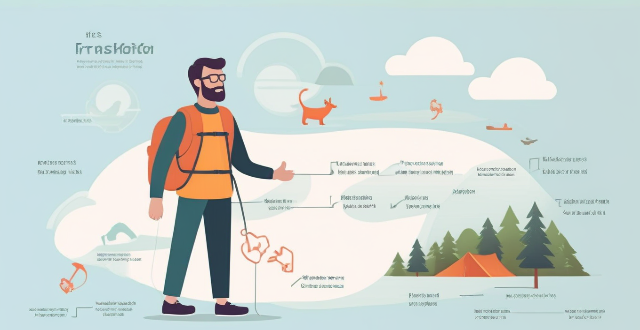
What are some common mistakes to avoid when planning a backpacking trip ?
When planning a backpacking trip, it's important to avoid common mistakes that can compromise safety and enjoyment. These include not researching the trail or destination, overestimating your abilities, bringing inadequate gear, packing too much or too little, ignoring weather forecasts, neglecting food and water preparation, traveling solo without a plan, and ignoring Leave No Trace principles. By avoiding these mistakes, you'll be better prepared for a safe and enjoyable backpacking trip. Remember to always prioritize your safety, respect the environment, and have fun exploring the great outdoors!